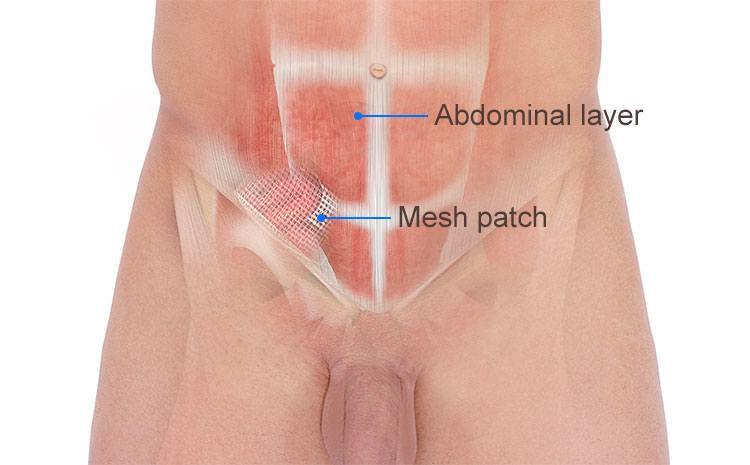
Femoral hernia usually requires surgical repair due to its high risk of bowel obstruction or strangulation (trapped). Your surgeon will push the bulged organ back to its place and close or provide support to the weakened area of the abdominal cavity.
Your surgeon may perform either an open or a laparoscopic surgery to repair the femoral hernia. These procedures will be performed under the effect of general anaesthesia. Local anaesthesia and medicines to help you relax may be administered for repairing a small hernia.

During the procedure, a single 3 to 4cm long incision will be made over the bulge or in your lower abdomen and the bulge will be separated from the surrounding tissues. Your surgeon may remove any excess tissue if required. The part of your protruded peritoneal sac will be pushed back into the abdomen. The muscles of the weak abdominal wall may either be stitched (Herniorrhaphy)or a piece of mesh may be sutured (Hernioplasty)in place to strengthen it.
Bowel resection (removal of a part of the intestine) may be required during an open surgery if the intestine is trapped and damaged inside the bulge or if fecal matter gets trapped inside. Your surgeon will cut off the damaged bowel and rejoin the ends of the healthy bowel.
Laparoscopic surgery
During laparoscopy, your surgeon will make 3 to 4 small incisions on the abdominal wall. A laparoscope (thin tube with a lighted device and acamera on its end) is inserted through one of the incisions and special surgical instruments are placed in through the other incisions. The peritoneal sac is pushed back in place and muscles of the abdominal wall are repaired by using either Hernioplasty or Herniorrhaphy.